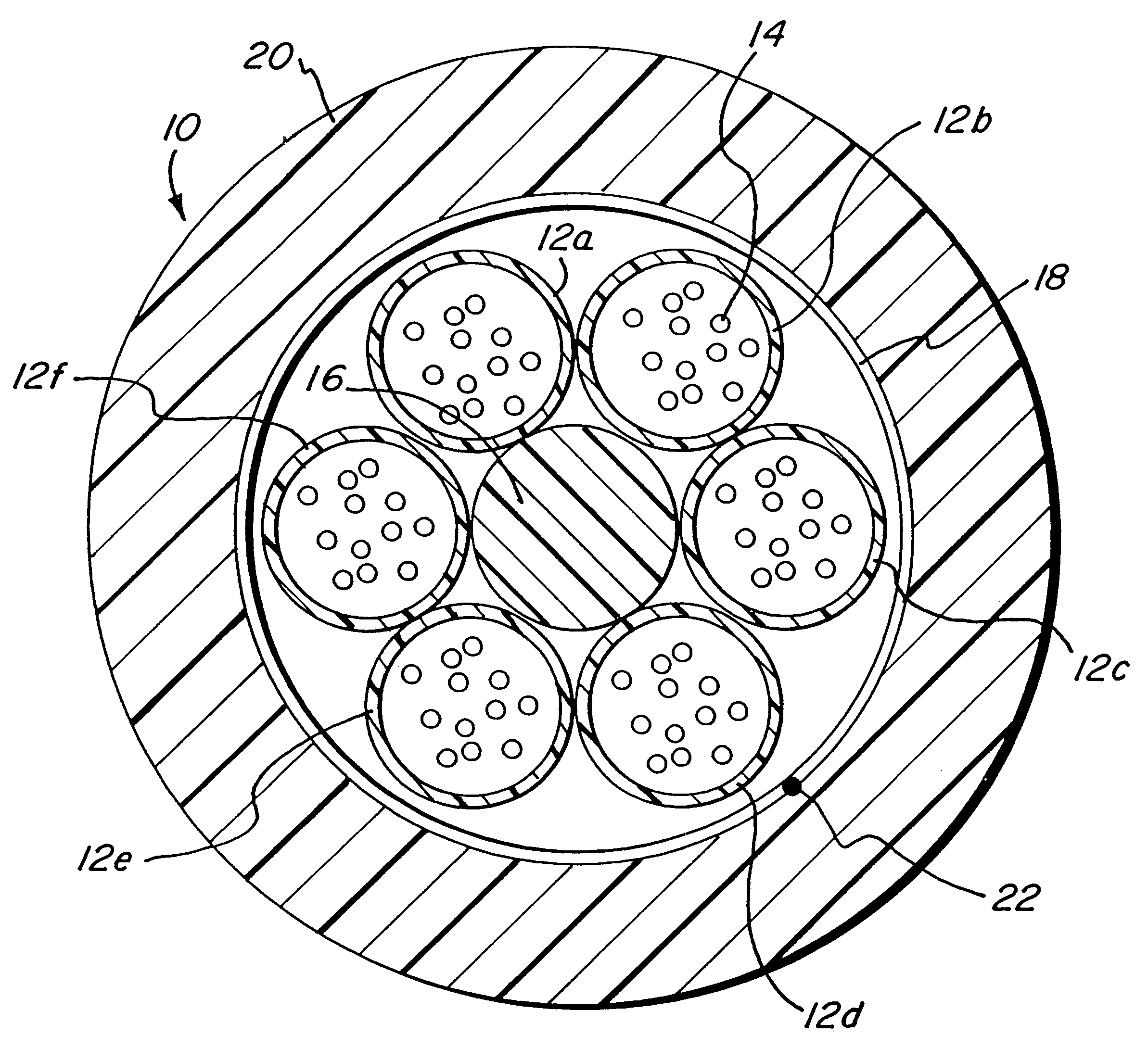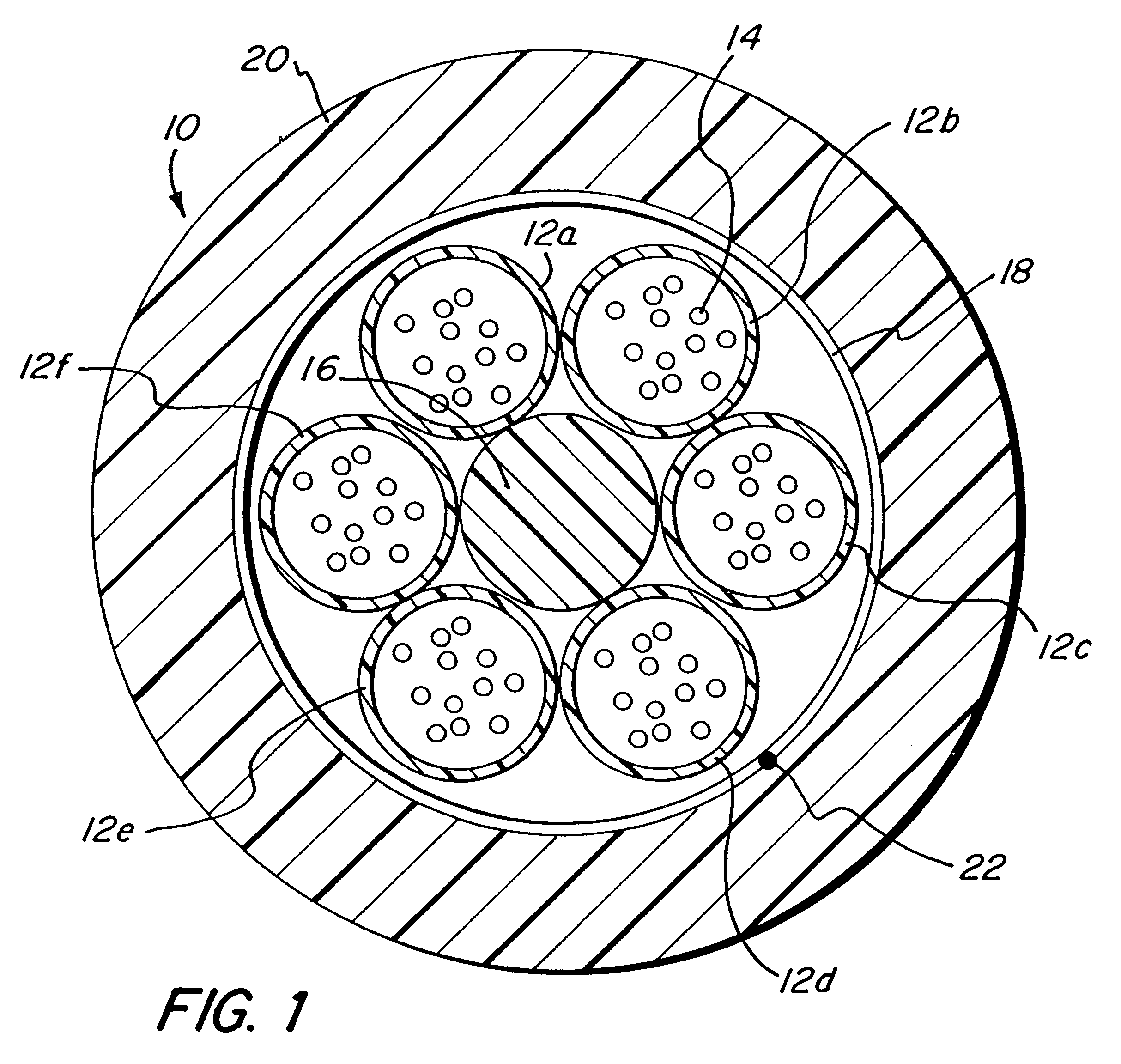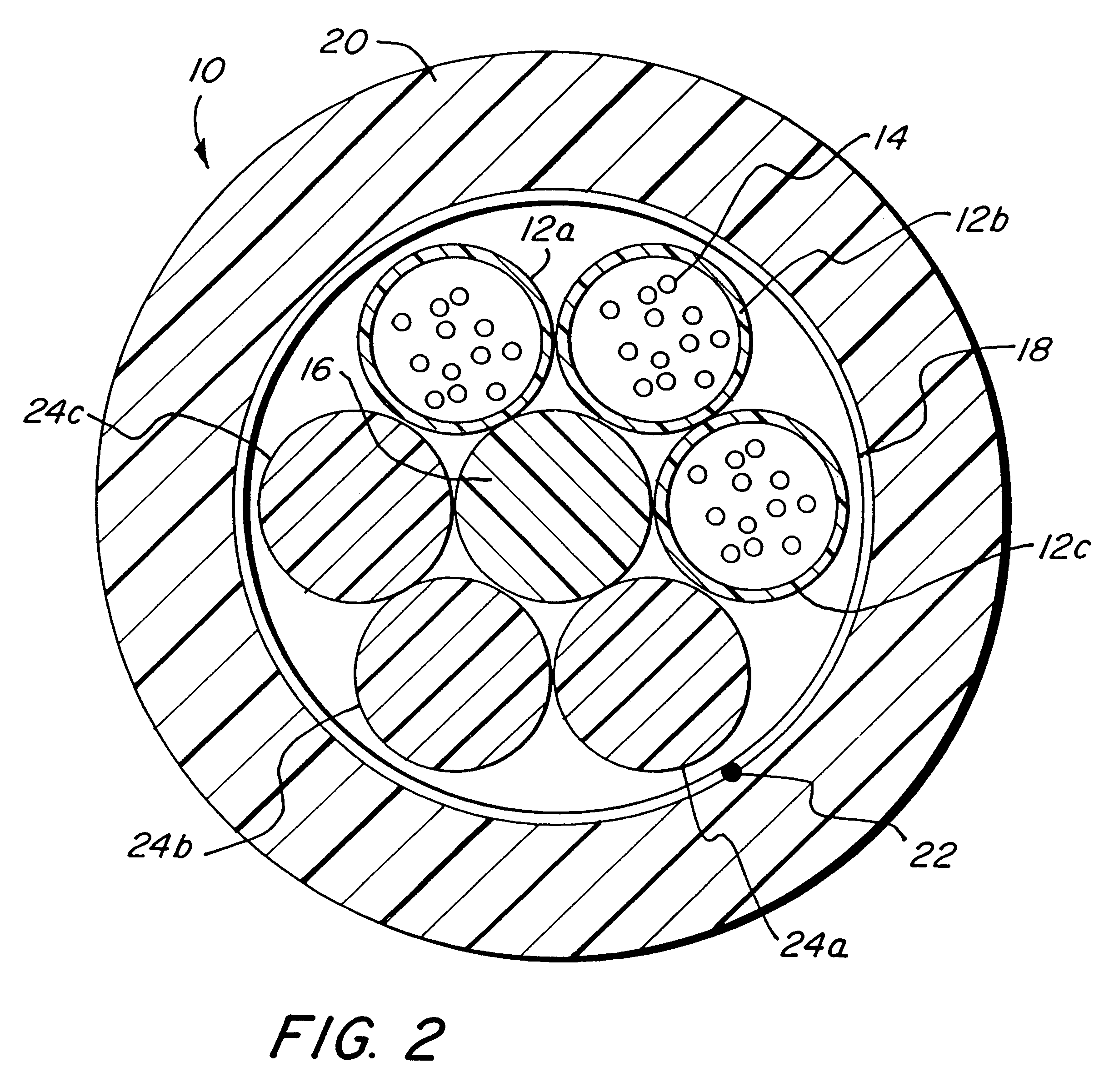Polypropylene filler rods for optical fiber communications cables
a technology of polypropylene and filler rods, applied in the field of communication cables, can solve the problems of reducing crush resistance, reducing the ease of cable and fiber access, and excessive post extrusion shrinkag
- Summary
- Abstract
- Description
- Claims
- Application Information
AI Technical Summary
Problems solved by technology
Method used
Image
Examples
Embodiment Construction
FIG. 1 illustrates a typical stranded optical fiber cable. The cable 10 has a core comprised of a plurality of buffer tubes 12a-12f, each of which house optical fibers 14, stranded about a central strength member 16. A core wrap 18 may positioned over the core. Water blocking materials (not shown) may be disposed in the core, if desired. A protective outer jacket 20 is disposed over the core and a ripcord 22 is provided near the interface of the wrap 18 and the outer jacket 20. The cable 10 illustrated in FIG. 1 has a maximum fiber count of 72 fibers.
Referring to FIG. 2, when a cable having a fiber count lower than 72 fibers, for example, is desired, such as 36, some of the buffer tubes (12d-12f) are replaced by filler rods 24a-24c. These filler rods help to maintain the overall concentric structure and material properties of the lower count stranded optical fiber cable to be the same as the higher count fiber cable.
According to the present invention, it has been found that filler r...
PUM
| Property | Measurement | Unit |
|---|---|---|
| weight percent | aaaaa | aaaaa |
| weight percent | aaaaa | aaaaa |
| shrinkage | aaaaa | aaaaa |
Abstract
Description
Claims
Application Information
 Login to View More
Login to View More - R&D
- Intellectual Property
- Life Sciences
- Materials
- Tech Scout
- Unparalleled Data Quality
- Higher Quality Content
- 60% Fewer Hallucinations
Browse by: Latest US Patents, China's latest patents, Technical Efficacy Thesaurus, Application Domain, Technology Topic, Popular Technical Reports.
© 2025 PatSnap. All rights reserved.Legal|Privacy policy|Modern Slavery Act Transparency Statement|Sitemap|About US| Contact US: help@patsnap.com



